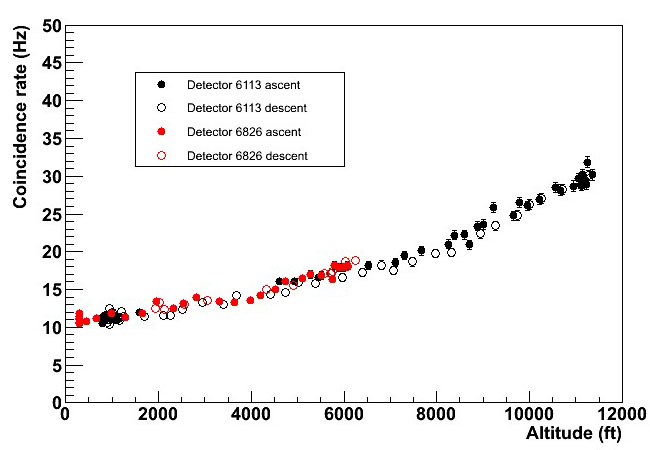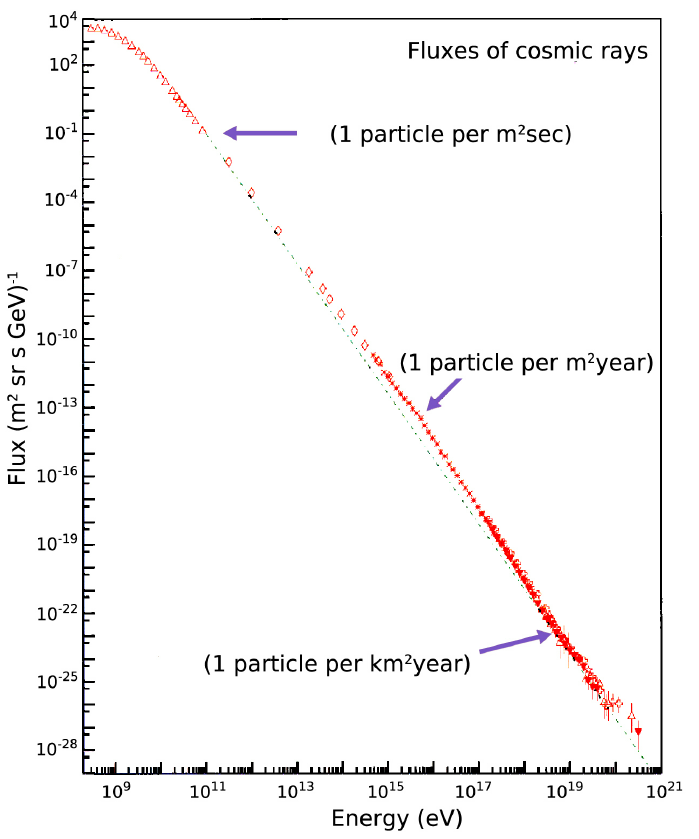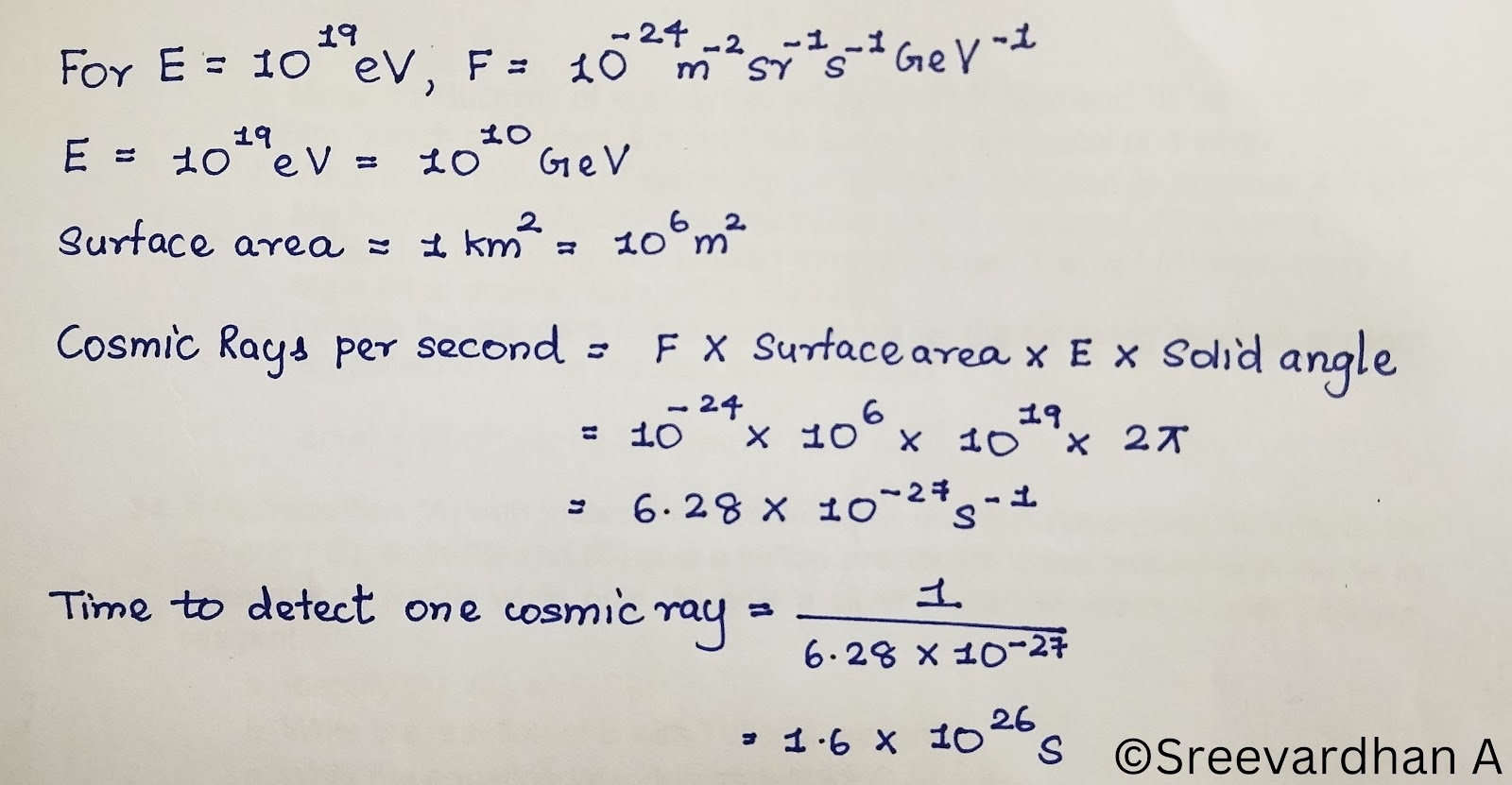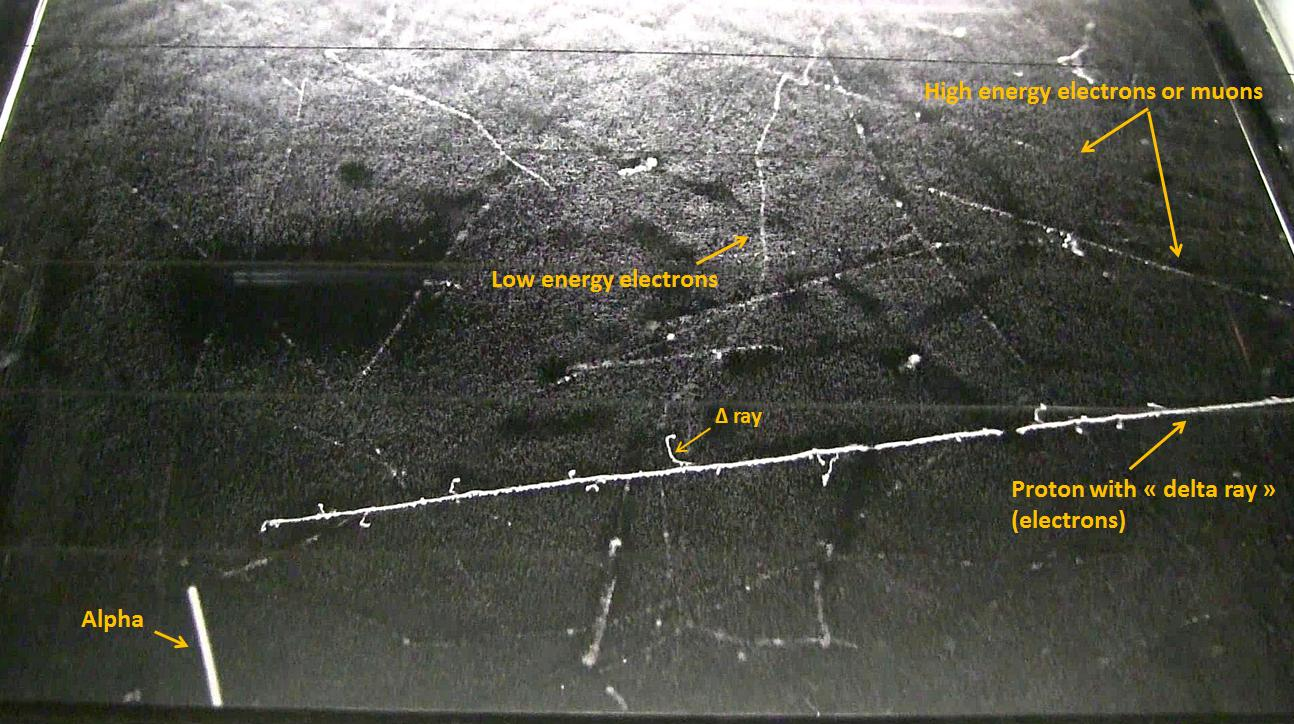UNLOCKING UNIVERSE'S HIDDEN POWER SURGE: COSMIC RAYS
Universe has always baffled us and we loved to explore its 'limitless' limits.
With the advent of the 20th century, we devised a method to send messengers (satellites) up there to carry out experimental observations on various aspects that needed clarification. However, there was a time before the birth of satellites when human beings relied on their intuition to develop theories, which they more or less proved using early inventions like telescopes.
Here, we are going to discuss about 'cosmic rays', something which has caught the limelight in recent years due to its ever fascinating principles and behavior.
THE START:
Let's go back to the year 1912. This year is particularly important for two reasons, the tragedy of RMS Titanic and Hess's Balloon Experiment.
The experiment conducted by Victor Hess opened a new era of cosmic ray exploration. Back then scientists believed that radiations came from three sources:
1) Earth's atmosphere
2) Radioactive materials present on Earth
3) The Sun
Further, the understanding in the scientific community was that radiation exposure decreases with altitude, a principle which eventually got discarded after Hess's experiment.
Hess took a balloon with an electrometer in it and flew it to higher altitudes to check for radiations. Guess what! He got a very surprising result.
Graph 1: Result of the Balloon Experiment conducted by Purdue University matched Hess's observations
Contrary to the belief back then, Hess observed that as we move to higher altitudes radiations level increased. Thus arguments (1) and (2) were satisfactorily disproved.
Now the argument narrowed down to whether the Sun was the source of radiation. Hess through his experiment proved that Sun is also not the cause of radiation in the atmosphere as the Earth's atmosphere, which acts as a protective layer deflects radiations coming from the Sun. This also proved the fact that Solar radiation decreased with altitude.
So where did the radiation come from?
The answer to this question won him the Nobel Prize in Physics in 1936.
COSMIC RAYS:
Cosmic rays are basically high speed particles that come from outer space. Cosmic ray particles are not directly observed on the surface of Earth. This is because cosmic ray 'primaries'—that is, the particles that arrive at the outer edge of Earth’s atmosphere—collide with atmospheric nuclei and give rise to 'secondaries'.
Some secondaries are fragments of the colliding nuclei, including neutrons, and others are short-lived particles created from the energy of the collisions. Secondary nuclei soon have their own collisions. It is the secondaries (neutrons and short-lived particles such as muons) that are observed at sea level.
They are mainly protons (hydrogen nuclei) with about 10 % fraction of helium nuclei and smaller abundances of heavier elements. Despite the much lower fluxes of electrons and positrons, these particles provide us with precious information on the sources of cosmic rays and the transport of these particles through the Galactic magnetic field.
Graph 2: Flux vs energy graph for cosmic rays
At lower energies, the flux is much higher, meaning that more cosmic rays with lower energy are reaching Earth. As the energy increases, the flux decreases sharply, showing that high-energy cosmic rays are much rarer.
The graph illustrates that low-energy cosmic rays are produced more often in space, such as by solar flares, while high-energy cosmic rays are rarer and typically come from extreme cosmic events like supernovae or black holes.
Let us use Graph 1 to solve a simple cosmic ray problem!
This simple example shows how difficult it is to detect cosmic rays of such high energy within a short amount of time, which is why they are so difficult to observe directly.
COSMIC RAY DETECTION:
Cosmic rays cannot be seen by the naked eye because they are not light, which is what our eyes are designed to detect. Our eyes can only see electromagnetic radiation (light) within a small range of wavelengths, from ultraviolet to infrared, known as the visible spectrum. Cosmic rays, on the other hand, are high-energy particles (like protons, electrons, and atomic nuclei) rather than photons of light. These particles are too small and fast to be visible, and they don’t emit light themselves.
Additionally, when cosmic rays enter Earth’s atmosphere, they collide with air molecules, creating secondary particles, but this process happens too quickly and at too high an altitude to be seen.
To overcome this issue scientists designed a device called a 'cloud chamber'.
Figure 1: Set-up of a cloud chamber (diffusion type)
A simple cloud chamber consists of the sealed environment, a warm top plate and a cold bottom plate. Isopropyl alcohol is usually used at the warmer end of the chamber where the liquid evaporates, forming a vapor that cools as it falls through the gas and condenses on the cold bottom plate.
When a charged particle (cosmic ray) passes through the chamber, it ionizes the gas molecules along its path and as a consequence an ionization trail is formed.
The alcohol vapor condenses around these ionized particles, forming tiny droplets. These droplets create visible 'trails' or 'tracks' in the chamber, which is observed as a misty cloud.
Figure 2: Cosmic ray trails in a cloud chamber
When air-mass saturated with water vapour is carried upwards by convection currents, it expands adiabatically and temperature falls. The excess amount of water vapor separates out in the form of liquid drops which appear as cloud or fog.
INFERENCE:
The cosmic rays detected through a cloud chamber gives us valuable information ranging from its source to energy content.
If the track is 'straight', it means it was moving in a direct line pertaining to the fact that it has very high energy. The cosmic rays may have been influenced by a magnetic field if it appears 'curved'. Further, starting point of the track can be found from a cloud chamber which would give us an indication of where the cosmic ray originated.
A heavier particle like proton would create a denser track than a lighter particle like electron. Scientists can also use this data to find the velocity and charge associated with cosmic rays.
COSMIC RAYS HAVE BEEN SILENTLY FLOWING THROUGH YOUR BODY ALL THIS TIME, CARRYING SECRETS FROM AN ALIEN COLONY.
YOU'VE ABSORBED THEM WITHOUT EVEN KNOWING. THE MESSAGE IS ALREADY INSIDE YOU... WAITING TO BE KNOWN...
REFERENCES:
1. How cosmic rays help us understand the universe by Veronica Bindi- TED-Ed
2. Re-enacting the flight of Victor Hess- Purdue University
3. The Origin of Cosmic Rays- V.L. Ginzburg and S.I. Syrovatskii
4. Understanding the graph of cosmic ray flux- physics.stackexchange.com
5. Cloud Chamber- An overview- ScienceDirect
6. Brian Cox Builds A Cloud Chamber, Wonders of Life- Series 1 Episode 3- BBC
7. A Report on the Wilson Cloud Chamber and Its Applications in Physics- N.N. Das Gupta and S.K. Ghosh, University of Calcutta
8. Cloud Chamber- Institute of Physics (www.iop.org)
9. Victor Hess, cosmic rays, cloud chamber- Wikipedia: The free encyclopaedia
*All the media published in this blog belongs to their original creators and 'Knowledge Through Science' does not claim any right over it.








Comments
Post a Comment